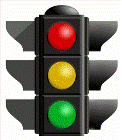Civil and Environmental Engineering
Document Type
Article
Date of this Version
2009
Citation
Highway Capacity and Quality of Service, 2009 (Transportation Research Record, no. 2130): 93-100.
Abstract
Analysis of queue discharge characteristics at signalized intersections is a primary component of traffic signal analysis and design. On the basis of previous studies, mainly conducted in homogeneous traffic conditions, the discharge headway is assumed to be high at the start of green for the first few vehicles, mainly because of start-up lost times, and is also assumed to reach the minimum value by the fourth or fifth vehicle in the queue. The minimum headway is expected to continue until the end of the queue. However, this may not be the case under heterogeneous traffic conditions, such as those in India, which has the additional problem of lacking lane discipline. Most of the signals in India include a countdown timer that indicates the time left for the signal phase, which is also expected to affect queue discharge characteristics. This paper presents insights gained on queue discharge characteristics at signalized intersections under heterogeneous traffic conditions and on the effect of a countdown timer on the headway distribution. The analysis was carried out using data collected from two intersections, one with a timer and one without, in Chennai, India, through the use of a videographic technique. The data collected are classified into three discharge regimes: start-queue, mid-queue, and end-queue. Linear regression models are used to assess the impact of vehicle types on queue discharge characteristics. The results indicate that the accepted headway distribution is followed when there is no timer. However, with the presence of a timer, there is a clear change in the trend for reduced start-up lost time and end lost time.



Comments
Copyright 2009, Transportation Research Board of the National Academies. Used by permission.